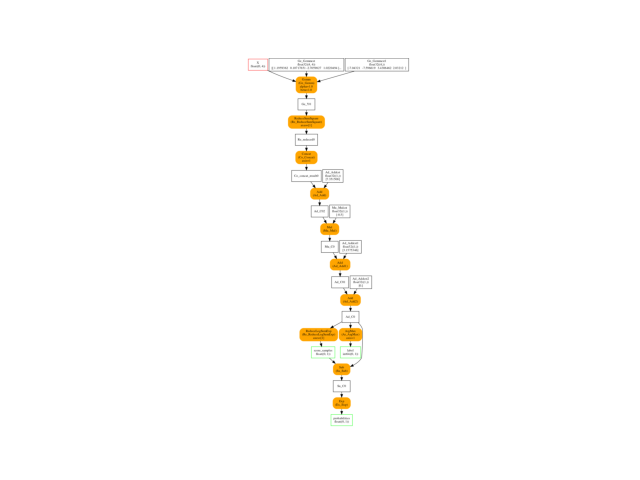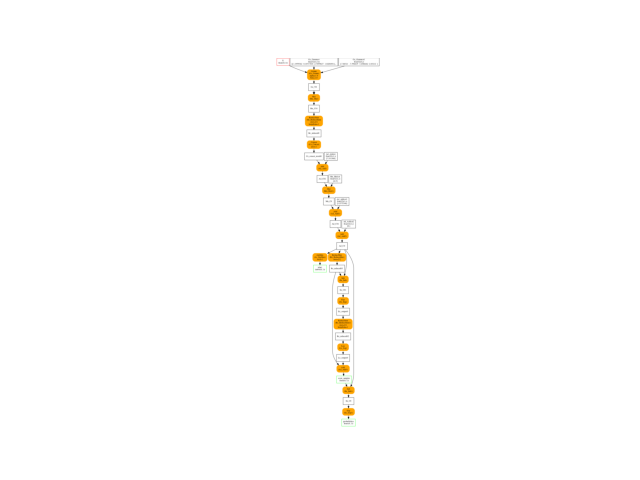Note
Click here to download the full example code
Black list operators when converting¶
Some runtimes do not implement a runtime for every available operator in ONNX. The converter does not know that but it is possible to black some operators. Most of the converters do not change their behaviour, they fail if they use a black listed operator, a couple of them produces a different ONNX graph.
GaussianMixture¶
The first converter to change its behaviour depending on a black list of operators is for model GaussianMixture.
from pyquickhelper.helpgen.graphviz_helper import plot_graphviz
from mlprodict.onnxrt import OnnxInference
from timeit import timeit
import numpy
from onnxruntime import InferenceSession
from sklearn.mixture import GaussianMixture
from sklearn.datasets import load_iris
from sklearn.model_selection import train_test_split
from skl2onnx import to_onnx
TARGET_OPSET = 12
data = load_iris()
X_train, X_test = train_test_split(data.data)
model = GaussianMixture()
model.fit(X_train)
Out:
GaussianMixture()
Default conversion¶
model_onnx = to_onnx(
model, X_train[:1].astype(numpy.float32),
options={id(model): {'score_samples': True}},
target_opset=TARGET_OPSET)
sess = InferenceSession(model_onnx.SerializeToString(),
providers=['CPUExecutionProvider'])
xt = X_test[:5].astype(numpy.float32)
print(model.score_samples(xt))
print(sess.run(None, {'X': xt})[2])
Out:
[-3.47700937 -1.76353421 -2.07677071 -2.11023566 -2.16489785]
[[-3.4770093]
[-1.7635326]
[-2.0767717]
[-2.1102371]
[-2.164897 ]]
Display the ONNX graph.
oinf = OnnxInference(model_onnx)
ax = plot_graphviz(oinf.to_dot())
ax.get_xaxis().set_visible(False)
ax.get_yaxis().set_visible(False)

Conversion without ReduceLogSumExp¶
Parameter black_op is used to tell the converter not to use this operator. Let’s see what the converter produces in that case.
model_onnx2 = to_onnx(
model, X_train[:1].astype(numpy.float32),
options={id(model): {'score_samples': True}},
black_op={'ReduceLogSumExp'},
target_opset=TARGET_OPSET)
sess2 = InferenceSession(model_onnx2.SerializeToString(),
providers=['CPUExecutionProvider'])
xt = X_test[:5].astype(numpy.float32)
print(model.score_samples(xt))
print(sess2.run(None, {'X': xt})[2])
Out:
[-3.47700937 -1.76353421 -2.07677071 -2.11023566 -2.16489785]
[[-3.4770093]
[-1.7635326]
[-2.0767717]
[-2.1102371]
[-2.164897 ]]
Display the ONNX graph.
oinf = OnnxInference(model_onnx2)
ax = plot_graphviz(oinf.to_dot())
ax.get_xaxis().set_visible(False)
ax.get_yaxis().set_visible(False)

Processing time¶
print(timeit(stmt="sess.run(None, {'X': xt})",
number=10000, globals={'sess': sess, 'xt': xt}))
print(timeit(stmt="sess2.run(None, {'X': xt})",
number=10000, globals={'sess2': sess2, 'xt': xt}))
Out:
1.3438124852254987
1.6173968352377415
The model using ReduceLogSumExp is much faster.
If the converter cannot convert without…¶
Many converters do not consider the white and black lists of operators. If a converter fails to convert without using a blacklisted operator (or only whitelisted operators), skl2onnx raises an error.
try:
to_onnx(
model, X_train[:1].astype(numpy.float32),
options={id(model): {'score_samples': True}},
black_op={'ReduceLogSumExp', 'Add'},
target_opset=TARGET_OPSET)
except RuntimeError as e:
print('Error:', e)
Out:
Error: Operator 'Add' is black listed.
Total running time of the script: ( 0 minutes 5.707 seconds)